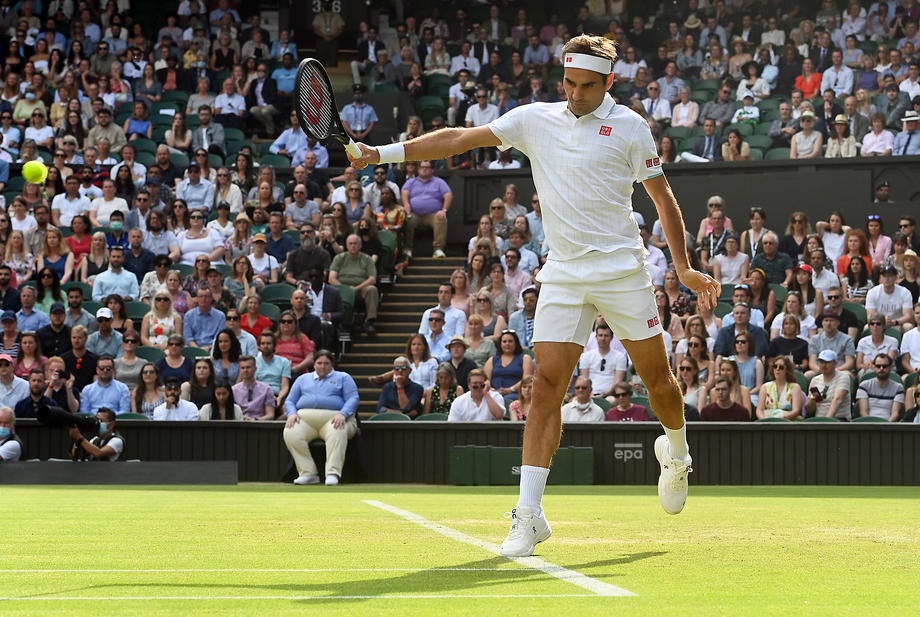- Ken Thomas Broadcasting from Georgia’s Rome Tennis Open
- Solinco Launches All-New Whiteout V2 Racquet
- Stringlet: Serving Up Tennis Inspiration With A Twist
- Davis Cup qualifying to feature Brazil vs. France and Spain vs. Switzerland
- 2025 US Open Expands to Sunday Start
- Tennis Channel To Broadcast U.S. Davis Cup Qualifier vs. Tawain
- Stefanos Tsitsipas Receives Rotterdam Wild Card From Richard Krajicek
- Tien and Basavareddy to Play Delray Beach Open Qualifying
- Australian Open Tennis 2025 Ends with Madison Keys and Jannick Sinner As Winners By Alix Ramsay
- 2025 Australian Open Final Draws
- Jannik Sinner Sweeps Alexander Zverev for Second Straight Australian Open Title
- Ricky’s pick for the Australian Open final: Sinner vs. Zverev
- Australian Open Draws and Order Of Play for Sunday, January 26, 2025
- Madison Keys Upsets Defending Champion Aryna Sabalenka in Australian Open Final Thriller
- Ricky’s pick for the Australian Open final: Sabalenka vs. Keys
Opposites Attract As Osaka And Azarenka Play Mind Games In The US Open Tennis Final
- Updated: September 11, 2020

By Alix Ramsay
Two women at opposite end of their careers; two women going into Saturday’s US Open final aiming to win their third grand slam trophy; two women who have not been beaten since tennis restarted and two women who have found a new calmness, a new peace, on court, one which brings them a steel-plated mental strength when the going gets tough.
So it is that Victoria Azarenka, 31, and Naomi Osaka, 22, will go toe to toe for the $3million pay cheque on Saturday afternoon. They were both pushed to their limits in the semi-finals, Azarenka overcoming the initial might of Serena Williams playing at full throttle to win 1-6, 6-3, 6-3 and Osaka finally getting the better of Jennifer Brady, playing her first grand slam semi-final, 7-6, 3-6, 6-3.
They have played three times before with Osaka leading their rivalry 2-1, the last encounter being a tight three-setter in the second at Roland Garros last year. But they were different players then.
Last year, Azarenka’s form came in fits and starts. There were some decent runs – the final in Monterrey, the quarter-finals in Rome and Stuttgart – but there were also the early round losses. Compared to her glory days of 2012 and 2013 when she won back-to-back Australian Open titles, reached back-to-back US Open finals and spent 51 weeks as the world No.1, it did seem that she was a spent force.

In her pomp, she had been a ferocious competitor, a player not to be messed with on any level. But after her grand slam victories, the injuries whittled away at her dominance. Then came the birth of her son, Leo, in December 2016. But almost as soon as she tried to come back, she was dragged into a complex custody battle, one which limited her ability to travel and dominated her every waking moment. As everything conspired against her, there were several occasions when she thought about packing it all in.
But for all her on-court ferocity and her former, off-court haughtiness (she was young, she was ranked No.1, she thought she ruled the world), Azarenka was – and is – a bright woman. As each obstacle planted itself in front of her, she found a way to beat it. Every time she was knocked back, she learned from the experience and came back stronger.
“I think when you’re coming up from kind of nothing, then you become a No. 1 player in the world, sometimes you can start to think you’re invincible,” she said, “and that you’re better than everybody, and it’s not true. So the ego starts to grow. It’s very hurtful when it gets damaged.
“Instead of getting the ego damaged, I tried to remove that and learn from my mistakes of that ego, and realising, maturing, that being a tennis player doesn’t make you better or worse than anybody else, that you’re still human, and all you can do is try to be the best version of yourself and keep improving.
“The best tools [to help me do that] were me losing a lot of matches. That was the biggest tool that I could get. I could continue to stay on my high horse or I could just change it and learn from that.
“I just feel I’m very proud of myself that I took that challenge up from losing and turn it around and become better. I’m not talking about a better tennis player. I’m talking about a better person for myself, for my son. That’s what I’m most proud of.”

But it has made her a better tennis player even though the process has been far from easy. At last year’s Australian Open, she broke down in tears in her press conference after losing in the first round. Back then, she knew her game was there or thereabouts in practice but she could not put it together in matches. As she mopped away the tears, she said: “It’s not easy to sit here right now and be positive but I don’t have another choice.”
Fast forward 20 months and Azarenka has a different approach. No more forcing herself to pick the positives out of every lousy situation and, equally, no more negativity when the same lousy situation reappears the following week. The answer that worked for her was to accepts the facts of that situation and try to ensure that it never happens again. No recriminations, no “why me?”; just learn and move on.
“I started taking more responsibility for what I do,” she said, “for what happens to me, and responsibility of how I’m going to react to situations. That helped me grow. That helped me become a better person that I am today. I think that shows on the tennis court, too.”

Osaka has also come back to New York with a different approach.
When she won her first major title, beating Serena Williams and the 23,000 New Yorkers who booed her every move two years ago, it was as if she had won the greatest prize in the world, one she had dreamed of all her life, and then somebody took it from her and stamped on it. That took some getting over.
But she pulled herself together and, four months later, won the Australian Open. That catapulted her up to No.1 in the rankings and suddenly she was on top of the world. That was when vertigo set in and for months she struggled with her form and her confidence. Life looked a little brighter at the start of this year, but not much. And then came the Covid shutdown – a time for Osaka to work and think.
She did everything she could to train during the lockdown months and by the time she got back to work, she was playing like the Naomi of old.
“For me, you’re never really sure how things will pan out,” she said. “But I felt like I put in as much work as I could, and I tried as hard as I could during the quarantine to get myself ready. For me, I felt that’s the only thing I could possibly to.
“I feel like my first match in Cincinnati, I was super nervous. But I was really happy with the level that I was playing. I just tried to keep building from that. Now I’m here.
“I feel like my mindset is much different this time around. I feel like I’ve learned so much through the ups and downs, not even counting the finals, but just regular tour tournaments. Mentally I feel stronger. I feel fitter now. It’s going to be interesting to see what happens.”
That strength has shown itself in her very vocal support for the Black Lives Matter movement. From her decision not to play her semi-final match at the Western and Southern Open (one that was eventually supported by both tours with the suspension of the whole event for 24 hours) to her wearing a different mask for every round of the Open, each one bearing the name of someone who has lost their life through racist violence. The once timid and shy Osaka has found her voice and she is a better player for it.

“I do think it’s a very big motivating factor for me just to try to, like, get the names out to as many people as I can,” she explained. “So, I’m not sure if that’s giving me extra power. Definitely I want more people to talk about it.”
But that is the thing: people are talking about BLM, about racism and about protest. They are not just talking about Osaka, the quiet player with the huge talent. That in itself is a huge release as her coach, Wim Fissette, knows only too well.
“For sure with wearing the masks, she wants to be a role model, but also she knows that it has to go together with the role model on court,” Fissette said. “So, it’s a good combination: role model off court; also great attitude on court. That goes together. So far it’s working really well.”
Two completely different women with completely different lives who have both reached the same conclusion about what really matters in this world: it is not what you do on the court that is the be all and end all; it is how you use that experience to learn and develop as life moves on. And now they play each other in the US Open final. It should be a belter.






